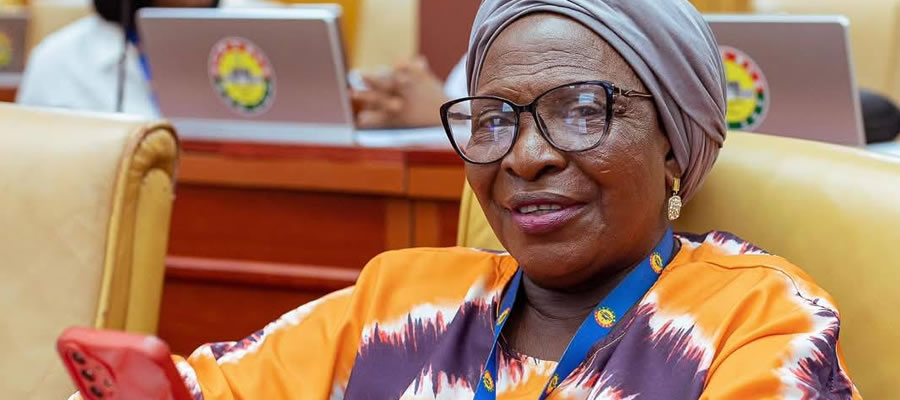

VULNERABILITY ANALYSIS
A person is considered vulnerable if he or she is and/or can be subjected to all forms of abuse which deprives him/her basic rights and needs. The Growth and Poverty Reduction Strategy (GPRS ?, 2006-2009) defines a vulnerable person as one who does not reach his/her full potential and cannot contribute effectively to the economic growth and sustainable social development in a country.
From the above definition, The Growth and Poverty Reduction Strategy II (GPRS II) categorises vulnerability to include the following:
- Child poverty
- People living in disaster prone areas
- Victims of abuse
- Inadequate alternative social infrastructure and safety nets
- Gender issues
- Child labour
- People living with HIV/AIDS (PLWHAS) and
- Compliance and implementation of national and international conventions
In summary, vulnerability can be described as the state of deprivation based on deformity, poverty or lack of enjoyment of rights and entitlements.
Persons with Disabilities
The disabled can be referred to as people who are physically challenged and devoid of reaching their full human potential and hence cannot contribute effectively to economic growth and sustainable social development of the country. The various forms of disabilities are; difficulty in hearing(deafness), difficulty in speaking(dumbness), difficulty in seeing(blindness), difficulty in moving(crippled), difficulty in learning or mentally derailed (DSW). People who find themselves in this category are described as vulnerable and the government takes keen interest in their welfare. This is clearly spelt out in Ghana’s 1992 constitution which provides that;
- As far as practicable, every place to which the public have access shall have appropriate facilities for disabled persons.
- In any judiciary proceedings in which a disabled person is a party legal procedure applied shall take its physical and mental condition in account.
- Disabled person shall be protected against all exploitation, all regulation and all treatment of a discriminatory abusive all degrading nature.
- Disabled persons have the right to live to live with their families or with foster parents and to participate in social, creative and recreational activities.
The survey in the Dormaa East District showed records of various forms of disability. In totality, 2.2% of the households visited had disabled people and 97.8% did not have disabled persons. The survey also sought to know the kind of disability people suffer from. The report indicated that Cripple, Blindness and deaf accounted for 25% each. Whilst 12.5% were dumb and others describe persons who had facial disorders, people with amputated arms and legs, among others as the questionnaire depicted were 12.5%.
The age of the disabled persons were taken into consideration. This was to know the most vulnerable age group (broad age cohort) among the disabled. The survey revealed that those in the working age group had the highest percentage, which was 62.5%, of disabled persons followed by the aged been 37.5%. There was no disable person in the children age cohort. These figures are alarming in the sense that, the working population who are supposed to work in order to improve the livelihood of their families and the District has larger proportion of the disabled. This reduces productivity in the various sectors especially agriculture which is the predominant and hence results in low productivity and low incomes of the entire District. By implication,
- There is a decrease in incomes of households of the people with disabilities
- There is a poor Antenatal and Post Natal Care on the part of disabled mothers due to inadequate health facilities.
- The disabled persons suffer from social stigmatization by the community especially in cases concerning marriages.
Causes of Disability
Another area of focus was the causes of disabilities for planning implications. It was realized that, most occurred through accidents representing 50%, whilst through disease and birth accounted for 25% each. This implies that, for optimum development of human resource potentials in the District, planning should mainstream the disabled in decision making. This would go a long way to reducing vulnerability in the District.
This Mid-year Progress Report covers all development projects executed up to the middle of the year 2010 ending 30th June. The Mid-year Progress Report (MPR) seeks to find out the status of the development programmes and projects implemented by Dormaa East District.
The report has been compiled from the result of the assessment of a set of indicators, triggers and targets which have been adopted for Monitoring and Evaluating of the achievements of key programmes and projects interventions implemented up to the middle of 2010. The objectives of the MPR are to:
- Provide single source information on progress the District is making in its development interventions.
- Identify weaknesses that are likely to hinder the achievement of the District goal and objectives.
- Propose policy recommendations for addressing the shortcomings.
Key Monitoring and Evaluation Objectives for the Mid Year 2010
- Assess whether DMTDP Developmental targets of 2010 had been met
- Identify achievements, constraints and failures so that improvements can be made to the DMTDP and project designs to achieve better impact
- Provide information for effective coordination of activities at the sector, Regional and National levels
- Improve service delivery and influence allocation of resources
- Demonstrate results to stakeholders as part of accountability and transparency
- Reinforce ownership and build M&E capacity within the Public Sector
- Document lessons learned from the implementation of Programmes and Projects
Processes involved and Difficulties Encountered
- Evaluation of the 2010 Development Programmes, Projects and Activities executed.
- Data collection on key Indicators, Targets, Critical Development and Poverty Issues from Departments and Agencies in the Districts.
- Data compilation and report writing.
Difficulties Encountered
- Inadequate data on key Indicators, Targets, Critical Development and Poverty issues from Departments and Agencies
- Lack of data from some Departments and Agencies
UPDATE ON INDICATORS AND TARGETS, CORE DEVELOPMENT AND POVERTY ISSUES
Human Resource Development
The main objective of the Human Resource Development for Dormaa East District is to improve the quality and standard of Education and the Health status of the people. This section of the report assesses the progress made towards achieving the targets set out in this thematic area, using selected key indicators on Human Resource Development such as Gross Enrolment rate, and Gender Parity Index, among others.
Gross Enrolment Rate
Enrolment level measures the number of persons at each level of education (primary, JHS, SHS). In 2010, enrolment at Primary, Junior High and Senior High increased in the District. For instance gross enrolment in Primary, Junior High and Senior High Schools increased from 83%, 62% and 55% in 2009 to 85%, 64% and 59% as against targets of 90%, 70% and 60% for mid 2010 respectively. The enrolment at Pre-school also increased compared to 2009. These could be attributed to the Capitation Grant and the School Feeding Programme. The table below shows the gross enrolment at the various levels for three academic years.
Gender Parity Index:
GPI talks of ratio of Boys to Girls at the various level of Education. Ghana is aiming at achieving a balance parity of 1:1. The table below indicates the GPI at Dormaa East District.
School Feeding Programme:
The School Feeding Programme was introduced with the sole aim of increasing school enrolment and improved the nutritional and health status of children at Basic Schools. However, in Dormaa East, only four schools out of about forty Basic schools benefited for the period under review.
Overview of Health Indicators:
Dormaa East District Assembly is barely two years old. It has no District Hospital and the people in the District seek medical attention from the Mother District now the Dormaa Municipal and Berekum Municipal. Hence there was no information on most of the health indicators.
Access to Safe Drinking Water
Poor access to safe water and lack of adequate Environmental Sanitation has been the major problem in the District most especially the Rural Communities. It has therefore deepened the poverty levels within these areas. This is so because since 2006 there has not been any attempt to increase the number of boreholes in the District and even to repair the existing ones.
Waste Management
With the advent of Zoomlion Company Limited in the District, the Waste Management which hitherto, had been a major problem is now a thing of the past as refuse containers have been place at vantage points to contain the situation in the District.. However, more refuse containers are needed in some Communities in the District.
Good Governance and Civic Responsibility
The broad objective of Good Governance and Civic Responsibility is to empower state and non –state entities to participate in the development process and to collaborate in promoting peace and stability in the body politic .The strategy to achieve this objective is to promote effective, responsible and accountable state machinery with improved capacity to engage the productive sector and civil society in formulating polities and strategies for accelerating growth and Poverty Reduction and in the Implementation and Monitoring and Evaluation.
Update on Disbursements from funding sources
The main sources of Revenue for Financing Development Programme at the District level are generated from Central Government transfers and Internally Generated Funds by the District Assembly. The table below depicts the Revenue Sources of the District
The table indicates that the DACF is by far the biggest contributor of funds to the District for Development. The contribution of the DACF is about half of all revenue flowing into the District. The DACF has emerged as the major reliable source of funding for the Implementation of District Development Project or Programmes. The total release of funds up mid 2010 was GH 726,378.72 since the year under review funds are no yet in.
Comment on:
(a) The releases were duly delayed. The DACF though, the biggest contributor of funds to the District for Development has not been adequate to support all programmes and activities of the Assembly. The IGF which is poorly generated has not been much reliable for the District to carry out most of its Developmental Programmes and Projects.
(b) Adequate efforts are being made to talk to the government to release funds on time. Again, there is an on-going exercise to educate the people on the need to pay their taxes. The Assembly is also putting measures in place to seek financial assistance from Donors to support developmental projects in the district.
(c) With regards to funds generation, The District is basically dominated by farmers whose incomes are difficult to determine. This makes it extremely difficult fixing high rate and taxes.
On disbursement, the main area was on administrative expenses as depicted in table 2.6 below.
Comments:
(a) The Funds are virtually not adequate for the District to carry out its Developmental Programmes and Projects.
(b) Could not go strictly by the budget because of some directives from Central Government.
Inadequacy and untimely release of funds have been the major problems confronting all the Assemblies.
Private Sector Competitiveness
Private Sector as an engine of growth is known in the District. Therefore the main objective of the Private Sector of the Dormaa East is to promote Information, Communication and Technology (ICT) Skills, Development and facilitate increase in Agriculture Productivity and agro-processing of the District.
The Key indicators selected to monitor progress towards the achievement of this objective among other include.
- Percentage Increased in Selected Crop Yields
- Percentage (%) Increase in yield of selected Livestock
- Percentage (%) Increase in yield of selected Poultry Birds
- Number of Farmers supported with Credit Facilities
- Number of Farmers using Improved Technologies
Percentage Increase in crop yield
Available records on crops production in the District have shown general increased of major crops like Rice, Yam, Cocoyam Plantain and Cassava. However, target for all the food crops were not met. For instance 15% increment in maize production was targeted for by mid 2010 and only 6.8% was achieved. These were attributed to inadequate rainfall, low application of modern technology in farming, inadequate fund to expand farms among others. Table 2.7 below demonstrate food crops production in the district.
Percentage Increase in yield of selected Livestock
Though, targets for Livestock production were not met, records in the District have increased appreciably. Notably Livestock species include: Cattle, Goat, Sheep, Swine (Exotic) and Grass cutter. For example the production of Goat increased by 21% against a target of 44.5% for by mid 2010, whilst that of grasscutters increased by 103.6% against a target of 172.7. The reasons advanced so far for these include: inadequate capital to expand farms, inadequate veterinary officers, outbreak of disease among others. The table below indicate Livestock production in the district
Core District Indicators on Poultry Birds Production
The Poultry Industry is booming in the District. Generally, there had been an enormous increase in production due to growing interest in the industry. Just like the food crops and the livestock industries, targets for the mid year 2010 were not met. For instance, out of the targets of 52.4% and 133.3% for Fowls (Exotic) and Guinea Fowls 42.9% and74.7% were achieved respectively. These are attributed to low access to credit facilities, high cost of Poultry feed due to lack of Poultry feed industry, high cost of Poultry drugs etc. Illustrated in the table are the core indicators of Poultry birds’ production in Dormaa East.
Core District Indicators on Poultry Birds Production
The Poultry Industry is booming in the District. Generally, there had been an enormous increase in production due to growing interest in the industry. Just like the food crops and the livestock industries, targets for the mid year 2010 were not met. For instance, out of the targets of 52.4% and 133.3% for Fowls (Exotic) and Guinea Fowls 42.9% and74.7% were achieved respectively. These are attributed to low access to credit facilities, high cost of Poultry feed due to lack of Poultry feed industry, high cost of Poultry drugs etc. Illustrated in the table are the core indicators of Poultry birds’ production in Dormaa East.
Roads
Road sector is expected to integrate the Rural Economies to the Urban Economy and facilitate the productivity in Agriculture and agro-industry. The District is agrarian with most of the food stuff coming from rural settlements. However, it is sad to note that roads linking these areas are in bad state leaving farmers and their produce stranded in the farms and several tonnes of food stuff gone waste. In the period under review, a total of 150 km of feeder and urban roads were earmarked for Surfacing, Reshaping and Rehabilitation. But a total of 78.4 km; 4.4 km surfacing of urban roads, 11km Rehabilitation of feeder roads and 63 km Reshaping of feeder roads were achieved.
Access to Energy
The major six towns in the District have been connected to the National Electricity grid However; most of the Rural Communities which constitute the chunk of the population in the District have not been connected to National Grid. Plans are far advanced to supply these Communities with Electricity in due course. Support is therefore needed from every quarter to accomplish this vision.
Telephone Penetration
The Information Communication Technology Sector is treated both as a support service as well as potential growth point. It is envisaged to be a pivotal tool to improve governance, accountability and transparency, Development of Human Resource Potential, in addition to facilitating transaction. The District is hooked with MTN, Vodafone, Tigo and Zain. These networks provide efficient services for residents.
Poverty Status of the District
The incidence of poverty in Ghana is measured at two levels; Upper Level and Extreme lower level. The upper poverty line in Ghana refers to income levels of up to GH¢ 90.00 a year or GH¢ 7.50 per month. The extreme poor are people with incomes below GH¢ 70.00 a year or GH¢ 5.80 a month. The current National Statistics on Poverty estimates is that about 40% of the National Population has incomes below the upper poverty line; whilst about 27% of the population has incomes below the extreme poverty line.
With reference to the above indicated cut-off points, it was estimated from the field survey that 38% of the district’s population are poor whilst 14.8% are extremely poor. The findings of the field survey substantiate the fact that poverty in Ghana is a rural phenomenon with the Rural Communities accounting for more than 60% of the poor. In terms of economic activity, poverty in the Dormaa East District is by far margin, highest among food crop farmers. This may be attributed to low prices of their bumper food crops produce.
ELICITING COMMUNITY PERSPECTIVE ON CURRENT NEEDS AND ASPIRATIONS
Since the Sub-district Structures had no existing development plans, the communities’ current needs and aspirations were collated through the consultation of the members of the town and area councils as well as opinion leaders and key stakeholder. These current needs and aspirations ranked according to the town and areas councils are presented in table 1.33 below.
The summary of these District needs and aspirations are enumerated below as follows:
- Improvement on educational infrastructure and performances
- Increasing access to potable water
- Increasing access to toilets and sanitary facilities
- Economic expansion and jobs creation
- Enhancing access to credit
- Improvement on health infrastructure and support services and facilities
- Reducing HIV and AIDS prevalence rate
- Development of Recreational facilities
- Increasing agriculture production and productivity
- Promotion of ICT development
- Ensuring justice and security
- Reducing gender disparity
- Environmental conservation
- Strengthening the District and Sub-district Structures
Date Created : 11/16/2017 3:10:51 AM












 facebook
facebook
 twitter
twitter
 Youtube
Youtube
 +233 593 831 280
+233 593 831 280 0800 430 430
0800 430 430 GPS: GE-231-4383
GPS: GE-231-4383 info@ghanadistricts.com
info@ghanadistricts.com Box GP1044, Accra, Ghana
Box GP1044, Accra, Ghana